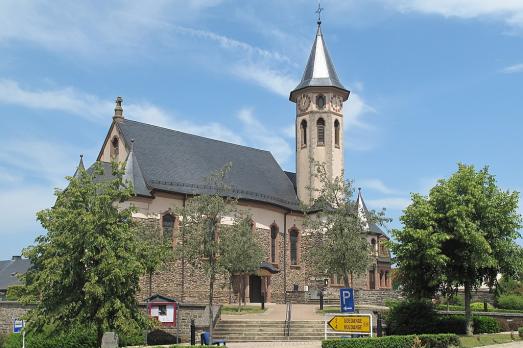
Church of Saint Lambert, Wilwerdange
Wilwerdange (Troisvierges), LU
The church was built in 1927 according to plans by the architect Joseph Jentgen in Art Deco style. It is an atypical, very rare architecture for Luxembourg.
Here you can search for a building to visit. You can use the map find destinations, or you can use the filters to search for a building based upon what different criteria.

Wilwerdange (Troisvierges), LU
The church was built in 1927 according to plans by the architect Joseph Jentgen in Art Deco style. It is an atypical, very rare architecture for Luxembourg.
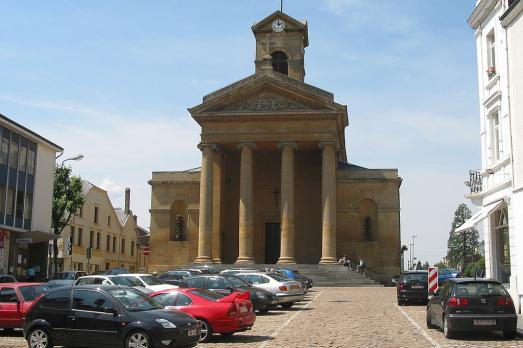
Virton, LU
The Neo-Classical Church of Saint Laurent was opened to the public in 1834 and is the work of the contractor Jacques-Modeste Guillemard of Longwy. Its imposing portal of four colossal columns with Ionic capitals supports a triangular pediment decorated with a bas-relief. At the end of the 1950s, the interior of the church was redesigned by architect Alexis Bodson from Virton. Four stained glass windows by Louis-Marie Londot also date from this period.

Tramecourt, FR
The church of Saint Leonard follows the Latin cross plan and is in the flamboyant gothic style. Entering through a sculptured porch over which can be seen the statue of St. Leonard and the arms and motto of the Tramecourt family 'Virtus et Antiquitas'.
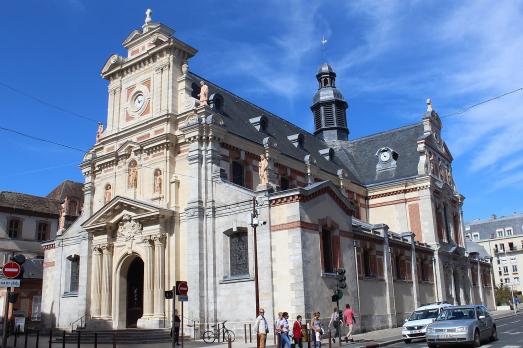
Fontainebleau, FR
This impressive church was built in 1611, is relatively recent, and its architectural style makes you feel it. Indeed, the façade was redesigned during the Second Empire. It was Marie de Medici who asked Claude Martin to build the church.
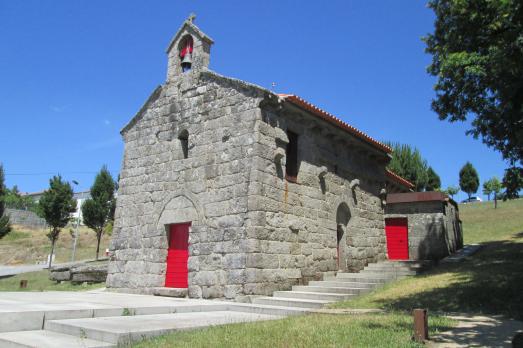
Felgueiras, PT
The oldest document ever to mention the Church of Saint Mammes of Vila Verde dates back to 1220, by which time it had already integrated the patronage of the Monastery of Saint Mary of Pombeiro. Renovations of the Church probably carried out in the 14th century, are attributed to the brother and sister Martim and Ana Anes, whose tombs may be found inside the Church. The Church was built in the Romanesque style, as can be seen in the plant and the façades. However, the arrangement of the portals and the resort to the clean modillions link this monument to a period in which the Gothic style was already dominant. The chancel exhibits traces of mural painting, dated from the 16th century, featuring botanic and geometric motifs. It is also possible to identify the images of Saint Benedict and Saint Bernard. This painting would have been done by the artisan Arnaus, under the patronage of the abbots of Pombeiro connected to the Melo family, whose coat of arms is still visible today. The construction of a new parish Church in Vila Verde in the second half of the 19th century contributed towards the continuing abandonment and decay of the Church of Saint Mammes. This monument was fully renovated as part of the project Route of the Romanesque.
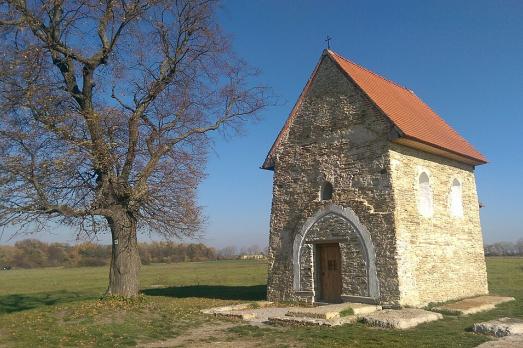
Kopčany, SK
The Church of St. Margaret of Antioch in Kopčany is the only authentic, almost completely preserved Great Moravian church with its original use and function. The building was originally part of the Slavic hillfort in nearby Mikulčice, where the remains of the foundations of several churches from this period have been found.
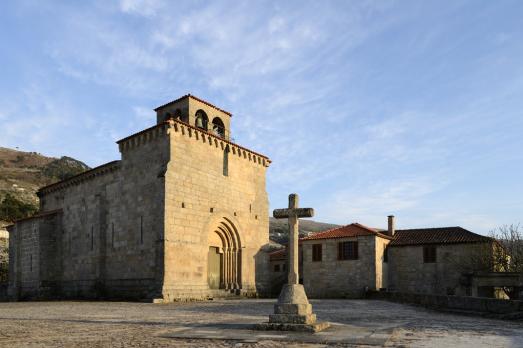
Resende, PT
The Church's tower-façade does not meet military requirements. For this purpose, there were the crags and valleys of this place that helped the Christians to take over the castle of Saint Martin. Thus, this Church, built in the 13th century, although it stands out as part of the Portuguese Romanesque due to the eccentric volumetrics of its façade, still fulfils the functions for which it was built, already in times of peace: the liturgy. Its initial design was bold but remained incomplete. The inscription "1217", discovered in an ashlar [stone] of the chancel, shows the start of its construction or the completion of the first phase of construction, thus giving expression to the hypothetical idea of a temple with three vaulted naves. Opposite the latter, there is a pointed triumphal arch topped by a framed oculus. It was, however, in the Modern Age, and especially during the Baroque, that the Church's space underwent further changes, such as the chancel, intervened under the responsibility of the patrons. Noteworthy are the paintings from the workshop of the Masters of Ferreirim (about 1530), the carvings in the main altarpiece [main altar] of "National" style, and the ceiling of hagiographic nature [the life of the saints].
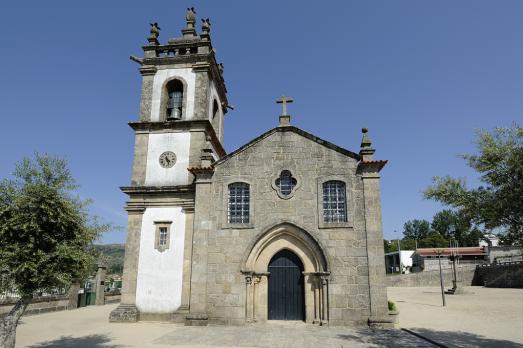
Marco de Canaveses, PT
Soalhães was a territory particularly coveted by medieval nobility. The importance of this land required its masters would take the toponym for their surname, as in the case of D. João Martins, called "of Soalhães", bishop of Lisbon and archbishop of Braga. However, there are few traces of the Romanesque left in plain sight, due to the deep intervention the Church underwent in the 18th century. Its main portal, dating back to the 14th century, features a proto-Gothic organization, confirmed by the absence of the tympanum and the naturalistic nature of its capitals. Although the oculus of the portal received an arrangement during the 18th-century intervention, the truth is that this did not happen inside the building, where we can still appreciate a frame punctuated by pearls, a motif fairly widespread throughout the Romanesque architecture of the basins of the Douro and Tâmega. Inside, a tomb from the 13th or 14th century, sheltered by arcosolium in the chancel, on the right, coexists with a profusion of colours and materials that bear witness to a somehow eccentric investment in tile panels, made of wood in polychrome medium relief, and in the gilded ornamentation which goes beyond the altars themselves.
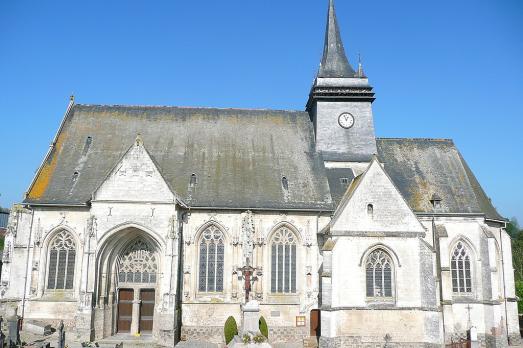
Fressin, FR
The church of Saint Martin is a remarkable and impressive building, one of the most beautiful in Artois, described by the author Bernanos in his books.
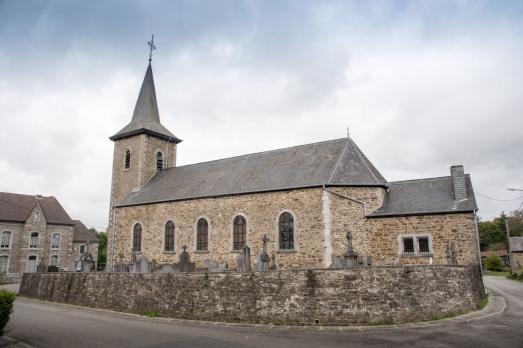
La Roche-en-Ardenne, BE
This old church from 1586 was enlarged in 1860 and the tower dates from this period. It was restored in 1887. Inside are considerable 18th century furnishings.

new
Bodø has evolved from a picturesque fishing village to a bustling cultural epicentre in the northeastern Norwegian county of Nordland. Here is a list of the top churches to visit in Bodø, the only European Capital of Culture above the Arctic Circle.

The small Austrian spa town of Bad Ischl is known for its beautiful nature and peaceful atmosphere. Emperor Franz Joseph I of Habsburg, described it as an "earthly paradise". Here is a list of religious heritage sites you should visit.
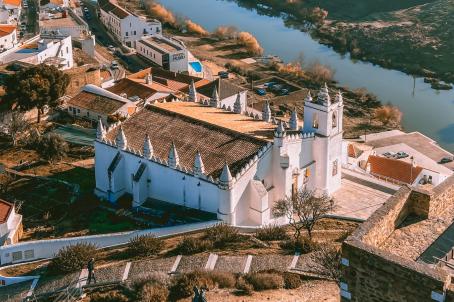
History is full of examples of temples converted to serve another religion. Here are 4 Christian places of worship that were important mosques in the past. Did you know them all?